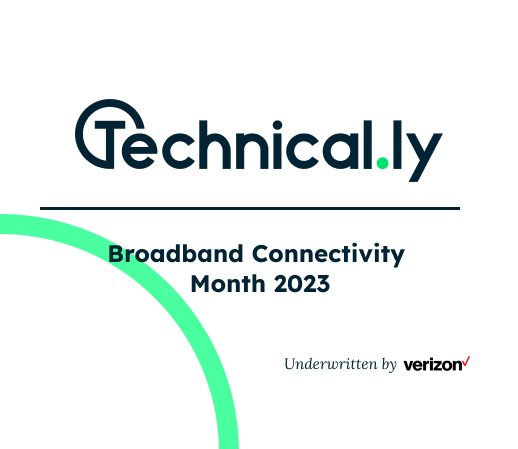After the Federal Communications Commission (FCC) started drafting new guidance on creating a broadband coverage map back in 2020, the Commonwealth of Virginia decided to get ahead of the game and create a map of its own.
That’s according to Brandon Herndon, director of the Center for Geospatial Information Technology (CGIT) at Virginia Tech, which was involved in the state map’s creation. However, unlike the FCC’s map, which broadly reports coverage at a census block level, Virginia’s map reports at an address level. This was made possible after Virginia’s 2022 Budget Bill directed all broadband service providers to submit updated service territory data to the Department of Housing and Community Development’s (DHCD) Office of Broadband.
CGIT and the department then worked together to create and launch a mapping tool, Commonwealth Connection, in March 2022 showing broadband coverage in Virginia. The FCC released its first map in November 2022.
CGIT and DHCD have a period where they will collect data from providers, and then they update their Virginia map accordingly. The latest update was in March 2023.
The arrival of these maps come during a swell of national conversation about digital access, and funding its expansion. The federal Broadband Equity, Access and Development (BEAD) Program launched in 2021 as part of the Biden-Harris Administration’s Infrastructure Investment and Jobs Act. This program allocated $42.45 billion to be divided among states to improve broadband infrastructure, depending on the number of unserved locations each state had on the FCC’s map.
This past January, the commonwealth and FCC compared its maps, with the FCC identifying 180,000 locations with broadband access that weren’t present on Virginia’s map. Through arbitration, the FCC conceded about 80,000 locations. In June, the commonwealth received $1.4 billion in BEAD funding.
“[The Office of Broadband] said that our analysis probably resulted in about $250 million additional funds for Virginia,” Herndon said. “So, because Virginia was ahead of the game by a few years and collecting their own data, it really put Virginia in [a] good position to challenge the existing FCC map to get additional unserved locations in Virginia.”
Dr. Tamarah Holmes, director of DHCD’s Office of Broadband, said the Virginia BEAD funding “reaffirms our commitment to bringing affordable, reliable, high-speed internet to every unserved and underserved household, business and community anchor in the Commonwealth.”
“Because of the strides made under the [Virginia Telecommunication Initiative] program, BEAD funds will enable us to achieve universal broadband access in Virginia,” she said in a written statement when the funding was announced in June. “We can then turn our focus towards ending the digital divide in broadband affordability, digital literacy and full adoption of broadband services to make Virginia a state of digital opportunity.”
Now that Virginia has received its funding from BEAD, the map will no longer collect data at an address level. The latest update from March will be the last time address-level data is used.
See the Commonwealth Connection map

This editorial article is a part of Broadband Connectivity Month of Technical.ly's editorial calendar, underwritten by Verizon. Verizon is a Technical.ly Ecosystem Builder client.
Before you go...
Please consider supporting Technical.ly to keep our independent journalism strong. Unlike most business-focused media outlets, we don’t have a paywall. Instead, we count on your personal and organizational support.
3 ways to support our work:- Contribute to the Journalism Fund. Charitable giving ensures our information remains free and accessible for residents to discover workforce programs and entrepreneurship pathways. This includes philanthropic grants and individual tax-deductible donations from readers like you.
- Use our Preferred Partners. Our directory of vetted providers offers high-quality recommendations for services our readers need, and each referral supports our journalism.
- Use our services. If you need entrepreneurs and tech leaders to buy your services, are seeking technologists to hire or want more professionals to know about your ecosystem, Technical.ly has the biggest and most engaged audience in the mid-Atlantic. We help companies tell their stories and answer big questions to meet and serve our community.
Join our growing Slack community
Join 5,000 tech professionals and entrepreneurs in our community Slack today!

The person charged in the UnitedHealthcare CEO shooting had a ton of tech connections

From rejection to innovation: How I built a tool to beat AI hiring algorithms at their own game

Where are the country’s most vibrant tech and startup communities?




